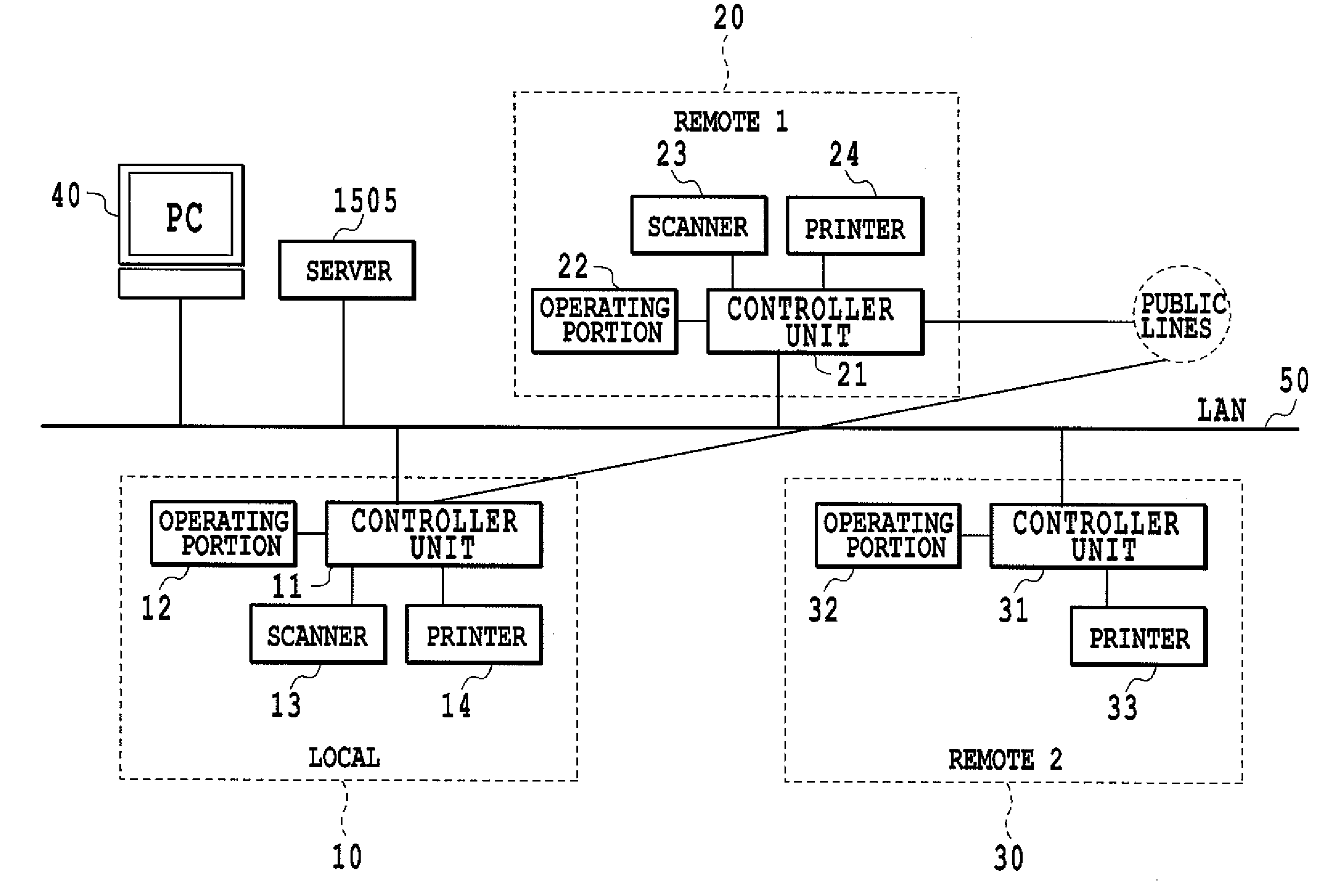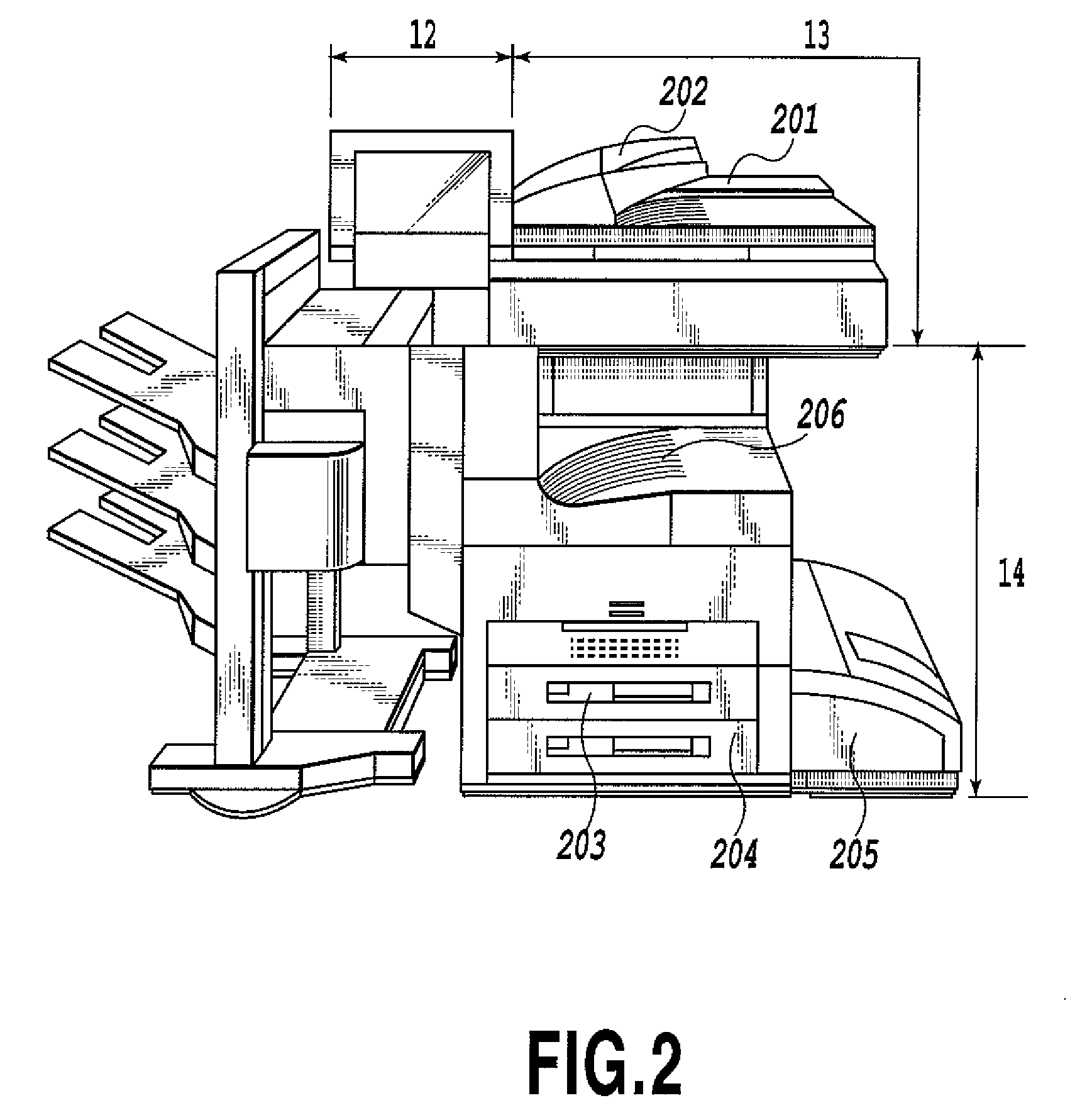Image processing apparatus, controlling method of image processing apparatus, program and storage medium
a technology of image processing apparatus and control method, which is applied in the direction of digital output to print units, visual presentation using printers, instruments, etc., can solve problems such as remaining, and achieve the effect of increasing the security strength of encoded data
- Summary
- Abstract
- Description
- Claims
- Application Information
AI Technical Summary
Benefits of technology
Problems solved by technology
Method used
Image
Examples
first embodiment
[0033]Hereinafter, a first embodiment will be described in detail with reference to the accompanying drawings.
[0034]FIG. 1 is a block diagram showing a configuration of a printing system concerning this embodiment. Although in this system a host computer 40 and three image forming apparatuses (10, 20, and 30) are connected to a LAN 50, the number of units connected to the printing system in this embodiment is not limited to three. Further, although a LAN is employed in this embodiment, no limitation is placed on the connection method used. For example, any network, such as a WAN (a public line), a serial transmission method, such as USB, or a parallel transmission method, such as Centronics or SCSI, may also be employed.
[0035]The host computer (hereinafter, referred to as a PC) 40 has functions of a personal computer. The PC 40 can transmit and receive files or e-mails using a FTP or a SMB protocol via the LAN 50 or WAN. The PC 40 can also transmit a print command to the image formi...
second embodiment
[0187]A second embodiment described below differs from the first embodiment in that information on the decoding process is registered in a server 1501 shown in FIG. 15, which is newly added to the network, and in which a user can change the information in the server.
[0188]With regard to processes in which a user inputs a document, and inputs data to a digital copying machine or a digital composite machine from a host computer, and encodes the input data, a difference from the first embodiment is described using a flowchart of FIG. 16.
[0189]The CPU 301 causes a scanner to read an image serving as the document in S901 and performs image processing in S902 and thereafter performs the first encoding to the input data. These points are the same as those of the first embodiment. Next, in the process of S1601, the CPU 301 acquires server identifying information for identifying the location of the server 1501.
[0190]In this way, this embodiment features that a process is added, in which the ...
third embodiment
[0207]In the first and second embodiments, the collation paper fingerprint information is stored in a location such as a server different from a recording medium serving as a document, but not limited thereto, and the collation paper fingerprint information may be retained in a recording medium itself serving as a document. That is, a location for storing the collation paper fingerprint information may be the recording medium.
[0208]In this case, in the second information generated in S904, a location where fingerprint information serving as the collation paper fingerprint information is stored may be a recording medium itself serving as a document.
[0209]In this embodiment, the paper fingerprint information acquired in S1202 is encoded as the collation paper fingerprint information and is printed on a document read in S1201. In this way, the collation paper fingerprint information will be retained in the recording medium serving as a document.
[0210]Accordingly, in S1303, the CPU 301 ...
PUM
 Login to View More
Login to View More Abstract
Description
Claims
Application Information
 Login to View More
Login to View More - R&D
- Intellectual Property
- Life Sciences
- Materials
- Tech Scout
- Unparalleled Data Quality
- Higher Quality Content
- 60% Fewer Hallucinations
Browse by: Latest US Patents, China's latest patents, Technical Efficacy Thesaurus, Application Domain, Technology Topic, Popular Technical Reports.
© 2025 PatSnap. All rights reserved.Legal|Privacy policy|Modern Slavery Act Transparency Statement|Sitemap|About US| Contact US: help@patsnap.com



